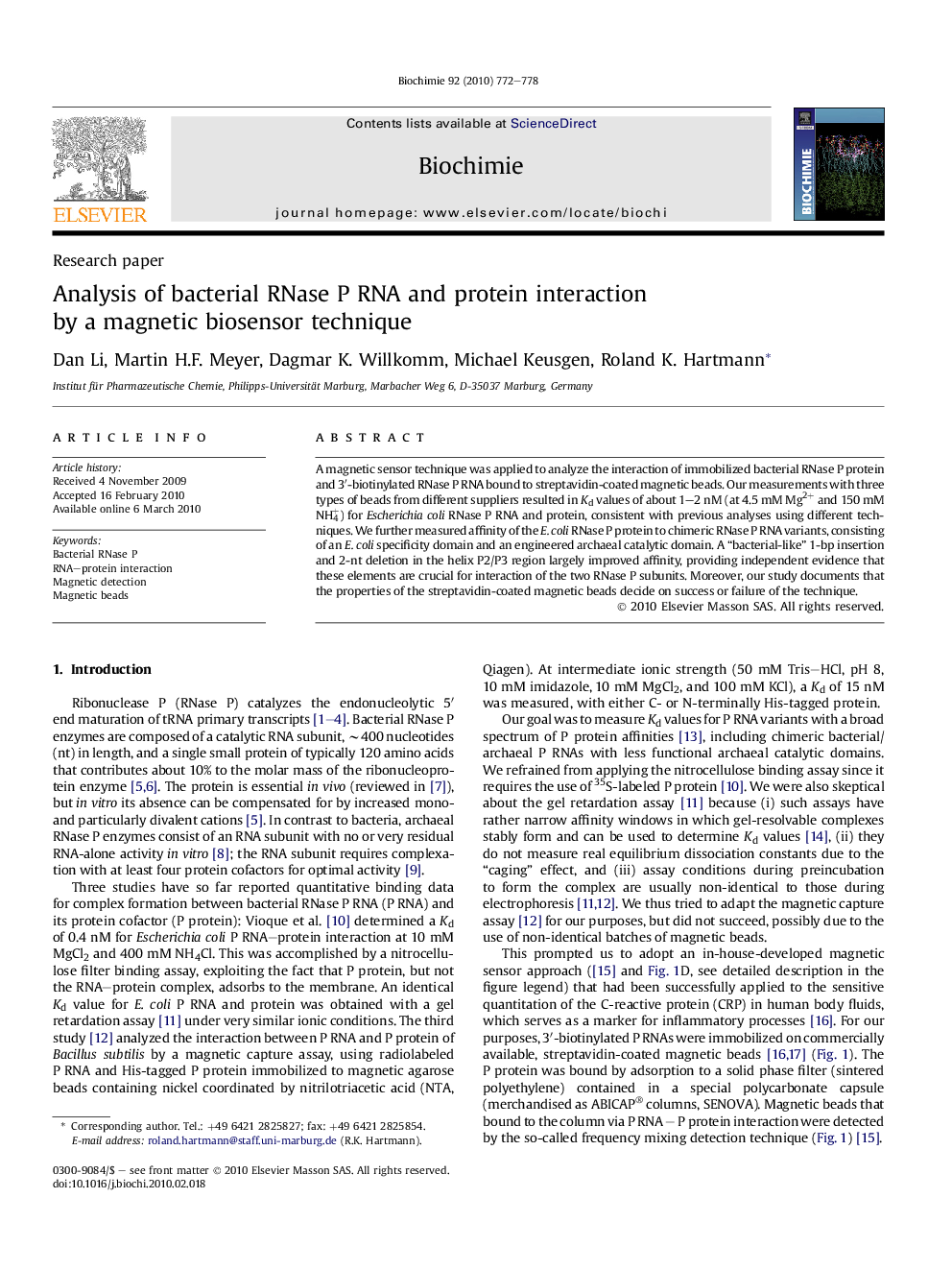| Article ID | Journal | Published Year | Pages | File Type |
|---|---|---|---|---|
| 1952751 | Biochimie | 2010 | 7 Pages |
A magnetic sensor technique was applied to analyze the interaction of immobilized bacterial RNase P protein and 3′-biotinylated RNase P RNA bound to streptavidin-coated magnetic beads. Our measurements with three types of beads from different suppliers resulted in Kd values of about 1–2 nM (at 4.5 mM Mg2+ and 150 mM NH4+) for Escherichia coli RNase P RNA and protein, consistent with previous analyses using different techniques. We further measured affinity of the E. coli RNase P protein to chimeric RNase P RNA variants, consisting of an E. coli specificity domain and an engineered archaeal catalytic domain. A “bacterial-like” 1-bp insertion and 2-nt deletion in the helix P2/P3 region largely improved affinity, providing independent evidence that these elements are crucial for interaction of the two RNase P subunits. Moreover, our study documents that the properties of the streptavidin-coated magnetic beads decide on success or failure of the technique.
